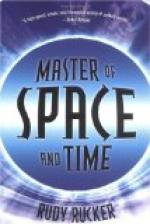The outbreak of the world war gave a tremendous impetus to the development of wireless telegraphy. The German cable to the United States was cut in the early days of the conflict. The sending power of wireless stations had been sufficiently increased, however, so that the great German stations could communicate with those in the United States. Communication was readily maintained between the Allies by means of wireless, the great stations at Poldhu and at the Eiffel Tower in Paris being in constant communication with each other and with the stations in Italy and in Russia.
Portable field sets had been used with some slight success even in the Boer War, and had definitely proved their worth in the Balkans. The outbreak of the greater war found all of the nations equipped with portable apparatus for the use of their armies. These proved of great use. The field sets of the United States Army also proved their utility in the campaign into Mexico in pursuit of Villa. By their means it was possible for General Pershing’s forces to keep in constant touch with the headquarters in the United States.
The wireless proved as valuable to the navies as had been anticipated. The Germans in particular made great improvements in light wireless sets designed for use on aircraft. The problem of placing an aerial on an aeroplane is difficult, but no little headway has been made in this direction.
It is the American boy who has done the most interesting work with the wireless in the United States. While the commercial development has been comparatively slow, the boys have set up stations by the thousands. Most of these stations were constructed by the boys themselves, who have learned and are learning how best to apply this modern wonder to the service of man. So many amateurs set up stations that the Government found it necessary to regulate them by law. The law now requires that amateur experimenters use only short wave-lengths in their sending, which will not interfere with messages from Government or commercial stations. It also provides for the licensing of amateurs who prove competent.
The stations owned and operated by boys have already proved of great use. In times of storm and flood when wire communication failed they have proved the only means of communicating with many districts. In time of war these amateur stations, scattered in all parts of the country, might prove immensely valuable. Means have now been taken to so organize the amateurs that they can communicate with one another, and by this means messages may be sent to any part of the country.
One young American, John Hays Hammond, Jr., has applied the wireless in novel and interesting ways. By means of special apparatus mounted on a small boat he can by the means of a wireless station on shore start or stop the vessel, or steer it in any direction by his wireless control. He has applied the same system to the control of torpedoes. By this means a torpedo may be controlled after it has left the shore and may be directed in any direction as long as it is within sight. This invention may prove of incalculable benefit should America be attacked by a foreign power.




